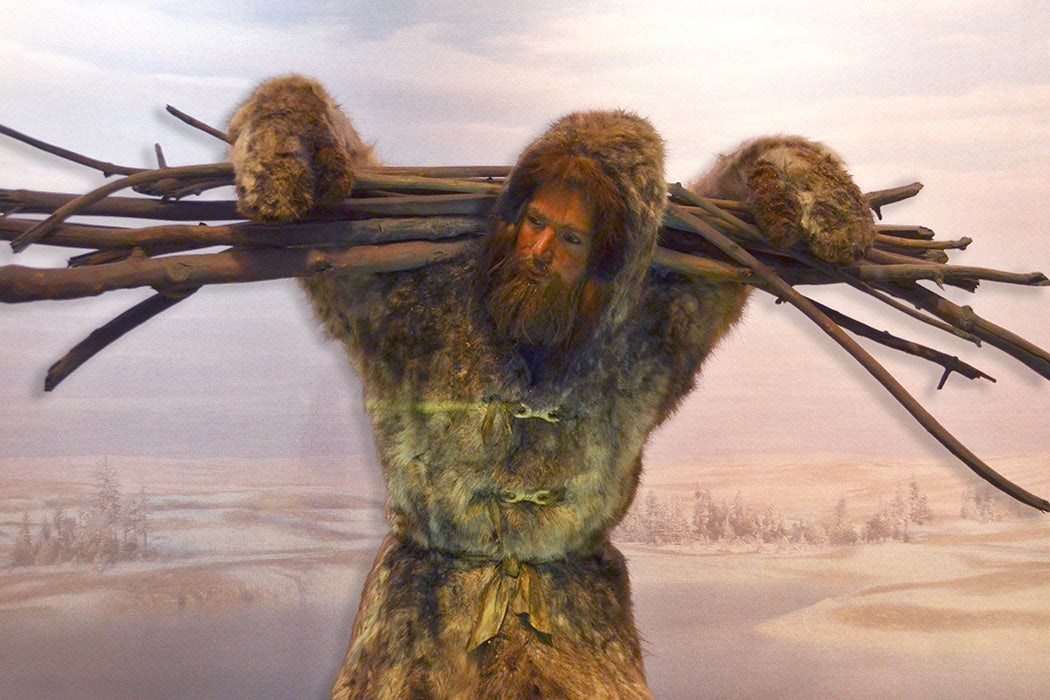The hunter-gatherer lifestyle is often described along gender lines: men hunting, women gathering. But in reality, it was much more complex than that. Our sexist reading of the ancient past has tended to undervalue the vital importance of women in early societies. In the case of the Younger Dryas Cold Event, women were crucial to surviving generations of cold-stressed habitat.
The Younger Dryas Cold Event (YDCE) is sometimes described as a “cold snap.” Some snap: it lasted around 1,300 years. In the midst of the warming trend following the last glacial maximum, this return to ice age conditions started rather abruptly, around 12,800 years ago. The YDCE is named after the tundra wildflower Dryas octopetala. Remains of this flower can be found in Scandinavian lake sediments, providing a convenient marker for dating. Other markers of this climate event include pollen and ice-cores. Archeological evidence, meanwhile, helps to reveal how the cold affected humans, and how important women were to survival.
Some have argued that the cold didn’t much affect humans, but the scholar Alan J. Osborn thinks otherwise. He argues that, in fact, the YDCE’s effects on Paleoindian and Early Archaic peoples in North America have been underestimated: “Winter climate during the YDCE most probably played a key role in shaping the lives and behavior patterns of hunter gathers during this 13-century-long period across much of North America.”
The extreme seasonality, alternating between warm summers and very cold and dry winters, was much greater than now. In fact, Osborn writes, the YDCE does not have “modern analogues.” In such extreme cold, wind chill becomes a life and death issue, and so “clothing becomes as significant and essential to human life as food itself.” And that’s where women came in: “One crucial adaptive response to cold stress was the development of sewing technology designed to manufacture tailor-made skin clothing.”
Osborn argues that eyed sewing needles, and the tools needed to make them, including “gravers, burins, abraders, and perhaps bow drills” were the responsibility of women. Women also fabricated and maintained winter clothing with these tools.
Eyed or holed needles were made out of bone from bears, birds, bison, caribou, fish, and fox. Ivory was also used. The needle holes could be gouged out with burins or drilled through. Elongated needles with channels for the thread meant that the hole in the garment would not have to be made larger than necessary for the thread. Parkas, pants, gloves, and boots for one adult could take up to five hides to make. An estimated 105 hours were necessary to make a complete outfit.
Weekly Newsletter
Osborn explains that caribou skins were preferred, because they were light weight while still being excellent insulators. They did have a drawback, however: the hairs were brittle, and they usually didn’t last more than one winter. So, clothing making became an annual event. Something like the late fall “sewing camps” among the Inuit, who “relied upon cached food and instituted taboos to insure that other activities did not interfere with the critical period,” may have been in order. Sew-a-thons, in short.
The causes of the YDCE have been much debated. The leading theory is that a sudden influx of fresh water from glacial lakes in Canada broke through ice dams and poured into the North Atlantic. Since fresh water floats atop salt water, this massive influx disrupted the circulation system that brings warm tropical waters north. Whatever else it was, the YDCE was a sudden onset of radical climate change that a technology mastered by women helped us survive.
Support JSTOR Daily! Join our new membership program on Patreon today.







